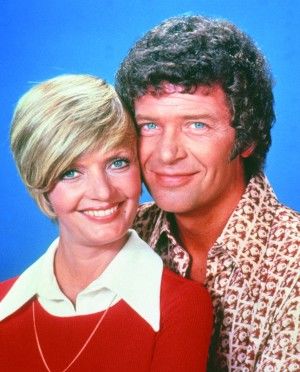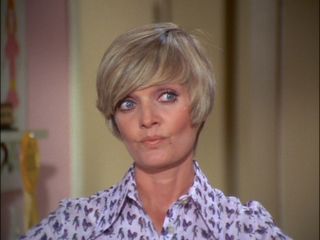Divorce
My Mom and the Legacy of America's Mom, Florence Henderson
Finding a maternal model in Carol Brady from "The Brady Bunch."
Posted January 6, 2017
We lost many stars and cultural figures in 2016: Carrie Fisher, Prince, David Bowie, Muhammad Ali, Leonard Cohen, Gene Wilder, Elie Wiesel, Harper Lee, to name a few.
But, I'm slightly embarrassed to admit that the star whose death flickered and burned out most poignantly for me—the one that had the most personal impact—was Florence Henderson.
Yes, Mrs. Brady.
“Here’s the story of a lovely lady who was bringing up three very lovely girls. All of them had hair of gold, like their mother, the youngest one in curls.”
Now that lovely lady is gone. Mrs. Brady is dead.
Actress Florence Henderson, who portrayed the character Carol Brady on the ABC show "The Brady Bunch" from 1969 to 1974 passed away over Thanksgiving. The original broadcasts of the show ended when I was 8. But thanks to syndication, after cancellation, the show grew in popularity, especially among kids like me raised in the 1970s.
For many of us, "Brady Bunch" Mom Florence Henderson embodied idea of the perfect wife and mother. She was "America's Mom." Back in the day, I mooned over Carol Brady (when I wasn't smitten by Marcia), in the simple-minded way a little kid can feel besotted, or even feel an intimate connection, with a TV character.
And, as I recently discovered, the fictional Carol Brady (maiden name, Carol Martin) grew up in Swampscott, Massachusetts, an hour and change from where I grew up in Seacoast, New Hampshire. She was closer to home than I ever knew.
For me personally, the Bradys were a kind of surrogate family. I idolized Florence Henderson as the Brady matriarch. I grew up in a classic 70s divorced home—which was, for many Americans rocking from the wake of a new cultural phenomenon, the sexual revolution. Mine was the first generation of American families forced to embrace mainstream divorce head on. My dad wasn't much in the picture from age 6 on; as I watched as my Mom tried to raise my sister and brother as a single parent in the early 1970s, Mrs. Brady seemed like a mom I could project my fantasies of motherhood upon.
My mother smoked, cursed, drank, and ate up life. Here was Florence Henderson as Carol Brady, a model for many moms, doing it all with grace and humor. Carol was an ideal mom—cheery, even-headed, compassionate, loving, fair. (As for father figures, I thought Lee Majors as "The Six Million Dollar Man" was a pretty good TV dad.)
People forget that the premise of "The Brady Bunch"—bringing together two "broken" families—was fairly groundbreaking for its time. Mike Brady, an architect, and his three sons, Greg, Peter and Bobby, join families with Carol Martin (aka Mrs. Brady) who had a trio of daughters of her own: Marcia, Jan and Cindy. As the theme song makes it clear, "'Til the one day when the lady met this fellow, and they knew that it was much more than a hunch, that this group must somehow form a family. That's the way we all became The Brady Bunch."
Portraying divorce between men and women on TV was controversial at the time, and divorced women were especially damaged goods. The show worked around this touchy subject in clever way. In the show's backstory, Mike Brady's wife has died, but the fate of Carol's first husband is never explained. "Brady Bunch" creator Sherwood Schwartz (the man also behind "Gilligan's Island" and writer of the theme songs to both shows) wanted her to be divorced and fought with the network to make this fact clearer.

Divorce deemed too risky for the times, the executives wanted her to be a widow like Mr. Brady. The compromise was that Carol's marital circumstances remained a mystery.
But everyone knew of my mother was divorced—and she had her share of boyfriends, too. As my mom struggled to get back on her feet in her personal and social life, I stayed glued to the TV.

There was another big difference between the two mothers: My mom worked full-time as a school teacher. If you recall, Carol is stay-at-home mother but one with dreams and hobbies. She's a mom of action—an artist, activist, singer, and aspiring writer who runs the local PTA and makes dinner, all the while telling jokes and gently teasing her husband.
In later episodes, she evolves with the times and gets a career as a real estate agent. For her day, Carol Brady is fairly "liberated" as woman. (As a Brady Bunch fansite proposes, "Maybe that's what scared off her first husband.")
In this regard, she was just like my mom, who packed a lot into her new life as a divorcée. She volunteered for the local conversation and historical societies, kept an organic garden, took photography classes, threw wild parties and international dinners at our house, coached my Little League team, and organized and built our neighborhood's 1976 Bicenennial float.
Of course, Carol Brady had the help of Alice, a live-in housekeeper, and an idyllic Los Angeles suburban community full of friendly neighbors and endless visitors and adventures. Despite the adversity and chaos from the coming together of two families, and what must have been (fictionally) an emotionally difficult time for Carol, she remarries after her first marriage, recreates her lost nuclear family and nonetheless manages to thrive.
Carol Brady, perhaps you set the standard a little too high for mothers like mine in the 1970s. For my mom in particular, you must have been a tough act to follow.
Of course, I loved my mom, even as I was falling for Carol Brady.
That I loved Carol Brady, I knew, was much more than a hunch.
Ethan Gilsdorf is a journalist, memoirist, essayist, critic, poet, teacher, performer and nerd. He is the author of the travel memoir investigation Fantasy Freaks and Gaming Geeks: An Epic Quest for Reality Among Role Players, Online Gamers, and Other Dwellers of Imaginary Realms. He writes on arts (with a focus on books and film); pop, gaming and geek culture; and media and technology, for the New York Times, Boston Globe, Boston Globe Magazine, Boston Magazine, Wired, Salon, Psychology Today, USA Today and elsewhere. He reviews movies for the Boston Globe and Art New England magazine, and reviews books for the New York Times Book Review and Boston Globe. Gilsdorf is co-founder of GrubStreet's Young Adult Writers Program (YAWP), and teaches creative writing at GrubStreet in Boston, where he serves on the Board of Directors. Follow Ethan’s Ethan’s adventures at ethangilsdorf.com; Facebook facebook.com/fantasyfreaksbook; and Twitter @ethanfreak.





